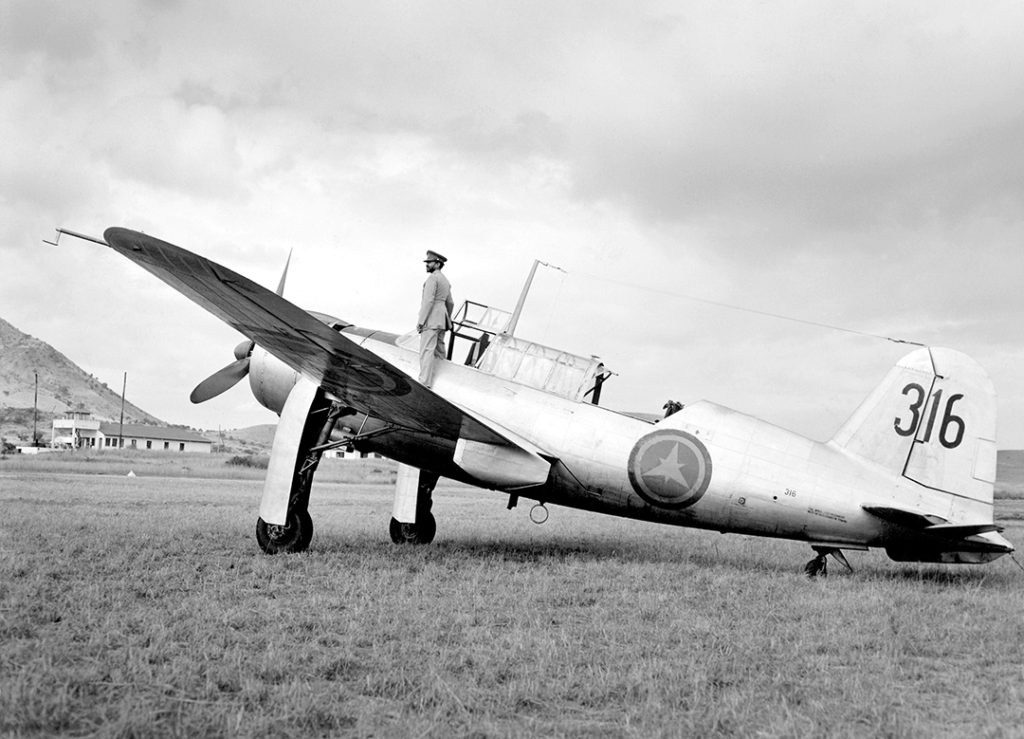ADF STAFF
In November 1922, Teferi Mekonen, an Ethiopian nobleman, visited a British Royal Air Force show in Yemen’s coastal city of Aden. Airplanes were big news, having been invented less than 20 years earlier.
The young Ethiopian had never seen an airplane up close and was fascinated. He asked whether it would be possible for his country to buy one. It is said that the British were somewhat put off by the request, coming from this 5-foot-2-inch Ethiopian aristocrat, and may have ridiculed him, telling him to stick with his country’s horses.
The Ethiopian was not to be denied. He championed the notion of an Ethiopian air force, and his country took delivery of its first military plane, a French single-engine biplane, in 1929. That plane constituted the beginning of the first air force of an independent African country.
Within months, the fleet had eight planes — six French biplanes and two German-made monoplanes. The air force, called the Imperial Ethiopian Aviation (IEA), was commanded by a French pilot and mainly handled transport and diplomatic duties.
A year later, the visionary Ethiopian nobleman became Emperor Haile Selassie, one of the most influential leaders in the history of Africa. There were countless obstacles for Selassie’s new force. It would take years to establish a pilot training program, and, in the meantime, Ethiopia had to rely on foreign pilots. By 1935, the air force had 13 aircraft but only four pilots, and only two were Ethiopian. There were no native mechanics for maintenance.
When Italy invaded Ethiopia on October 3, 1935, the IEA was not prepared to defend the country. None of its airplanes was combat-ready, and it had no combat-trained pilots in its ranks. But from the beginning of the war, the IEA flew troops, ammunition and supplies as needed, often while under attack from Italian planes and groundfire.
Many black Americans were offended by the Italian invasion, considering it an affront to their ancestry. Two of them, John Robinson and Hubert Julian, joined the IEA to fly military materiel and medical supplies. Robinson also brought Ethiopian students to the United States for flight training.
The Italians, with their superior armaments, eventually overwhelmed Ethiopia and occupied the country until 1941. By the war’s end, the IEA no longer existed. In 1945, a new air branch of the armed forces was established, the Imperial Ethiopian Air Force, with new aircraft and a fresh start. Selassie, working with Robinson, established a new flying school with 75 students. But the Air Force relied heavily on foreign pilots and instructors for training, particularly Swedish aviators, and it did not have a native-born commander until 1962.
Robinson’s place in Ethiopian history is assured — he helped establish a civilian air service, which became the kernel of what is now Ethiopian Airlines, one of Africa’s largest and most successful air services.
In 1953, Ethiopia’s Air Force signed a defense agreement with the United States, getting a squadron of F-86 fighters in 1960. But the country struggled financially to maintain and build its forces, and by the mid-1990s, its numbers of useful aircraft were negligible. Ethiopia is now one of the world’s true commercial air powers, but not a major military one.
Today, Africa has about 25 countries with 20 or more military aircraft, and nine of those countries have large forces rivaling those of other countries on the world stage. It should not be forgotten that Ethiopia, and its visionary emperor, did it first.

